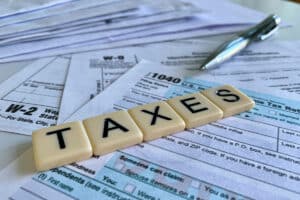A tax extension could give you more time to file, but not more time to pay. To avoid penalties and fees, make sure you mark October 10th on your calendar. There is typically no penalty for failure to file if the taxpayer has done a good job reducing his taxes and is due a refund. However, those who wait too long to file and claim a refund can risk losing it altogether. Those who have not filed a 2020 tax return, owed tax and failed to request an extension can generally avoid additional penalties and interest by filing the return as soon as possible and paying any taxes owed.
Does this tax extension deadline apply to me?
If you filed IRS Form 4868 on or before the May 17, 2021, filing deadline, the tax extension deadline gives you until October 15, 2021, to file your tax return. If you did not file IRS Form 4868 before the May 17 tax-filing deadline and did not file your tax return either, you are likely to be extremely late in the eyes of the IRS. The IRS can assess interest on your outstanding tax bill, as well as administer penalties for failure-to-file and failure-to-pay. Those who automatically get more time to file include military personnel and people affected by a qualifying disaster.
What happens if I miss the October tax return extension deadline?
The tax extension gives you more time to file, not more time to pay. If you miss this deadline, you will owe more interest. You may owe a higher late-payment penalty, which is typically 0.5% per month of the outstanding tax that has not been paid by the deadline. The maximum penalty could be up to 25%. 90% of your tax liability is supposed to be paid by the regular filing date. The IRS could also issue a late-filing penalty of 5% of the amount due for each month and partial month that your tax return is late. The maximum penalty is also up to 25%.
How do I make payments on my taxes?
In the past, writing a check was pretty much the only way to make a payment to the IRS. Now, however, there are a ton of options. Here are 7 ways to make a payment to the IRS:
IRS Direct Pay
How it works: Go to the IRS Direct Pay website, verify your identity and bank information, and authorize an ACH debit from your bank account
Cost: Free
The Electronic Federal Tax Payment System (EFTPS)
How it works: You go to the IRS EFTPS website, provide identity and bank information, wait about a week for a PIN to arrive in the mail, set a password, go back online, and authorize an ACH transaction from your bank account.
Cost: Free
Same-day wire transfer
How it works: A wire transfer moves money electronically from one person to another using a bank or a nonbank provider.
Cost: About $25, depending on your institution
Debit card
How it works: You go to the website of one of the IRS’s three independent payment processors, then provide the payment amount, your card information, and other data. The processor sends the money to the IRS.
Cost: Between $2 and $3.95 per payment (the fee goes to the processor, not the IRS).
Credit card
How it works: You go to the website of one of the IRS’ three independent payment processors, then provide the payment amount, your card information, and other data. The processor sends the money to the IRS.
Cost: Between 1.96% and 1.99% of your payment; minimum fee is between $2.50 and $2.69 (the fee goes to the processor, not the IRS)
Check, money order, or cashier’s check
How it works: Have one made out to the U.S. Treasury and mail it to the IRS. Make sure it includes your name, address, daytime phone number, Social Security number or employer identification number, the tax year it should be applied to, and related tax form or notice number.
Cost: Stamps and/or mail delivery tracking, plus a possible fee to get a money order or cashier’s check
Pay in cash
How it works: Go to the IRS’ PayNearMe website and follow the instructions to make a cash IRS payment. You get an email confirming your information, and the IRS verifies your information. You get a second email with a link to a payment code and instructions. You then go to the retail store in the email, have the clerk scan your code and then you hand over your cash. You get a receipt and payment confirmation.
Cost: $1.50 to $3.99 per payment
Mobile payment: IRS2Go
How it works: IRS2Go is the IRS’ official mobile app. You can use it to make payments via the mobile version of IRS Direct Pay for free or with a debit or credit card (for a fee).
Cost: App is free
Installment payments
How it works: If you can’t pay your tax bill in full when it’s due, you can get on a payment plan with the IRS. There are two types of plans: short-term (for people who can pay off the balance in 180 days or fewer) and long-term (for people who need more time).
Cost: $0 to $225, depending on the plan you select, how you enroll, and whether you’re a low-income taxpayer
How can I get an extension for my next tax return?
If you already know that you’ll need more time for your 2021 taxes, be sure to file IRS Form 4868 on or before next year’s tax filing deadline: April 15th, 2022. Remember that getting an extension only gives you more time to file, not to pay the taxes you owe. When filing for an extension, you can estimate what you owe and pay some or all of that with your extension request. If the estimated payment ends up being less than what you actually owe, you will most likely have to pay interest on the difference. The longer that is outstanding, the more interest you may pile on.
Don’t neglect filing your tax returns. Doing so can result in IRS penalties and fees. For questions about your 2021 or 2022 tax return, contact the professionals at Hayes & Associates.





